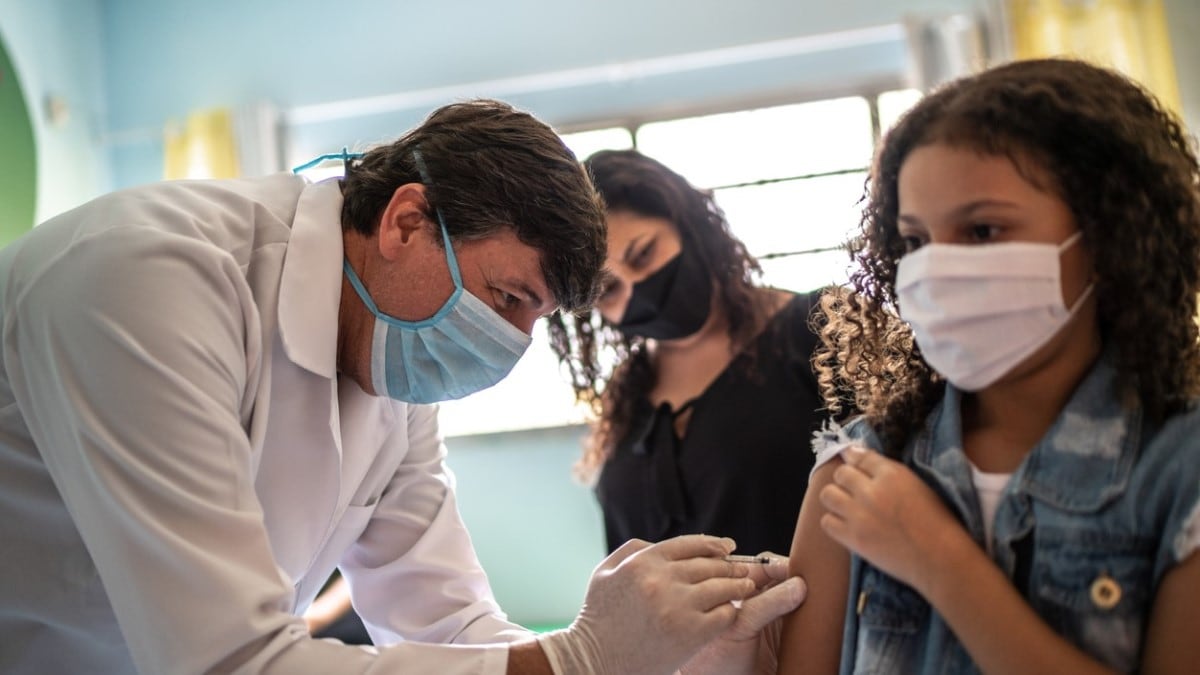What to know
The Iowa Department of Health and Human Services worked to increase HPV vaccination among adolescents in selected clinics.

Childhood is best time to start cancer prevention
Preventable risk factors are estimated to cause more than 40% of cancer deaths.1 For many types of cancer, the best time to start prevention activities is during childhood.
Several organizations and guidelines recommend primary cancer prevention interventions for children and adolescents.234567 They include the Advisory Committee on Immunization Practices, The Community Guide to Preventive Services, Healthy People 2030, and the National Academies of Sciences, Engineering, and Medicine.
In 2019, CDC's National Comprehensive Cancer Control Program funded a demonstration project to encourage primary cancer prevention in children. It chose three states to conduct activities designed to reduce the number of future cases and deaths from liver, cervical, and skin cancer. Program recipients chose evidence-based strategies that addressed one or more of these cancer types.
Iowa uses a proven approach to promote cancer prevention
For its project, the Iowa Department of Health and Human Services focused on cervical cancer. The goal was to increase human papillomavirus (HPV) vaccination among adolescents in selected clinics across the state.
To achieve this goal, the state used evidence-based training that teaches health care providers how to make and support strong HPV vaccine recommendations. This training uses an "announcement" approach that assumes parents want their children to receive recommended vaccinations during that day's office visit.2
A trained physician champion presented information to primary care providers at participating clinics. The providers attended live webinars to learn how the announcement approach could be used to encourage HPV vaccination. Participating clinics agreed to use this approach with adolescent patients who were due for HPV vaccination.
Project achievements
- The Iowa state health department held two announcement approach trainings.
- 11 clinics across the state participated.
- 46 providers attended the webinars, including more than 30 doctors, nurses, nurse practitioners, and physician assistants.
- Attendees represented public health clinics serving rural and micropolitan counties.
- Pre-tests and post-tests conducted at the webinars showed improved scores for self-efficacy and behavioral intentions related to HPV vaccination.
- Clinic staff indicated in interviews that they found the approach and the project valuable.
Takeaways and lessons learned
At the end of the demonstration project, Iowa reported that:
- Working with partners, such as local universities, made implementation and evaluation easier.
- Creating a document that summarized the project and explained the benefits of participating was helpful in recruiting clinics.
- Recruiting from across the state may help encourage more clinics to participate in future projects.
- Working with clinics that had received grant funding from the state health department in the past made the project go more smoothly.
- Continuing to work with partners is critical to improving HPV vaccination rates across the state.
- Using frequent communication and more hands-on technical assistance to clinics may improve implementation
- GBD 2019 Cancer Risk Factors Collaborators. The global burden of cancer attributable to risk factors, 2010–19: a systematic analysis for the Global Burden of Disease Study 2019. Lancet. 2022;400(10352):563–591.
- National Cancer Institute. Evidence-Based Cancer Control Programs. Making effective HPV vaccine recommendations. Accessed October 31, 2022. https://ebccp.cancercontrol.cancer.gov/programDetails.do?programId=26926144
- Schillie S, Vellozzi C, Reingold A, et al. Prevention of hepatitis B virus infection in the United States: recommendations of the Advisory Committee on Immunization Practices. MMWR Recomm Rep. 2018;67(1):1–31.
- Meites E, Kempe A, Markowitz LE. Use of a 2-dose schedule for human papillomavirus vaccination—updated recommendations of the Advisory Committee on Immunization Practices. MMWR Morb Mortal Wkly Rep. 2016;65(49):1405–1408.
- Community Preventive Services Task Force. Skin Cancer: Primary and middle school-based interventions. Accessed March 1, 2023. www.thecommunityguide.org/findings/skin-cancer-primary-and-middle-school-based-interventions
- National Academies of Sciences, Engineering, and Medicine; Health and Medicine Division; Board on Population Health and Public Health Practice; Committee on a National Strategy for the Elimination of Hepatitis B and C. A National Strategy for the Elimination of Hepatitis B and C: Phase Two Report. Buckley GJ, Strom BL, eds. National Academies Press; 2017.
- US Department of Health and Human Services. Healthy People 2030. Accessed March 1, 2023. https://health.gov/healthypeople
